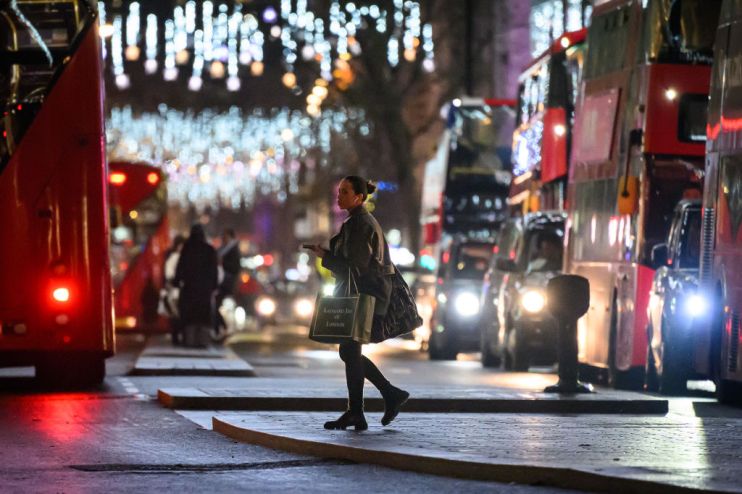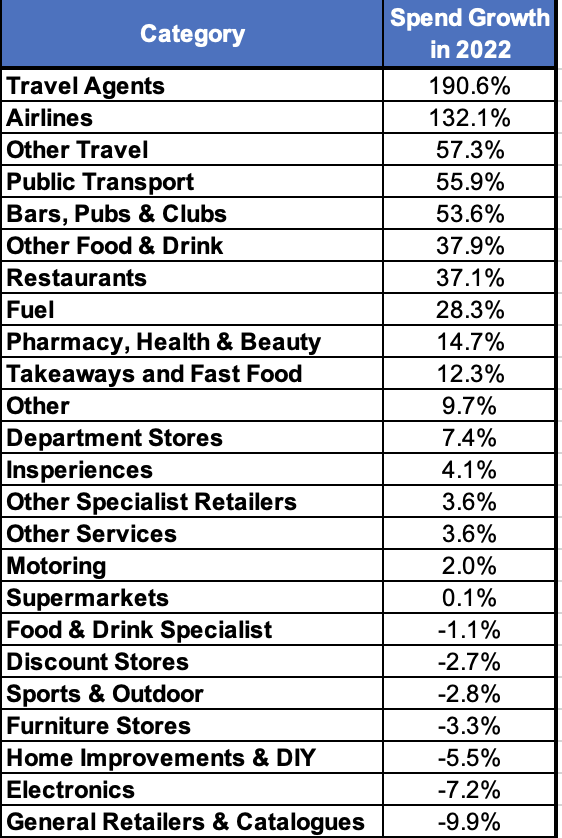Inflation surge reshapes Brits’ spending, but so does end of Covid-19 curbs

Inflation reaching a 41-year high. Interest rates back to 2008 levels. Mortgage costs up substantially.
It’s been a tough year for the Great British consumer.
Income growth has failed to keep pace with what was a 11.1 per cent cost of living peak, meaning households have been forced to cut back to protect their finances.
Some areas of spending have been more favoured by Brits to rein in, illustrating how higher prices are reshaping consumption patterns.
Retail spending dropped 0.8 per cent over the last year, according to data from Barclaycard, which oversees around £1 in every £1 spent in the UK.
Elevated food prices have prompted households to switch to cheaper alternatives, such as own-brand products, to save cash.
Although headline inflation seems to have passed its peak – it fell to 10.7 per cent in November – the rate of food price increases actually jumped last month and has raged all year, likely driving a 0.1 per cent reduction in grocery spending, Barclaycard said.
Home improvement spending fell sharply this year, the main reason why overall retail consumption skidded lower. Costly big ticket purchases have either been delayed or scrapped altogether amid the cost of living squeeze.
DIY retailers, like B&Q, experienced a 5.5 per cent drop in the value of consumer spending. Sales volumes – a better measure of how much people are spending as it strips out inflation – dropped 7.5 per cent.
Electronics sales also shrank 7.2 per cent and furniture stores lost 3.2 per cent revenue compared to 2021.
While living cost pressures are forcing Brits to be more cautious, the end of Covid-19 restrictions also changed behaviour in 2022.
Households hoovered up new laptops, computer screens and other products to help them work from home during lockdown periods. Spending days on end isolated between four walls likely steered Brits toward renovating kitchens and bathrooms.
As people have returned to offices, demand for such products has collapsed.
Social spending underwent a marked uptick over the last year, sparked by pubs, bars, restaurants and high streets reopening after the successful roll out of Covid-19 vaccines in 2021.
Sales volumes at pubs, bars and restaurants surged more than just over two thirds over the last year. Restaurant sales volumes also climbed more than a third, leading to overall leisure and hospitality volumes to jump over a quarter.
Brits took to the skies once again after countries around the world dismantled travel restrictions to curb the spread of disease. Flight sale volumes more than doubled this year. Consumers also opted to holiday at home to capitalise on the scorching weather over the summer.
Spending changes in 2022 broken down category

Esme Harwood, director at Barclaycard, said: “The lifting of all Covid restrictions meant card spending was up overall compared to last year. Hospitality, leisure and travel all received a boost as Brits made up for lost time by socialising with friends and jetting off on holidays.”
Barclaycard estimates total card spending rose 10.6 per cent in 2022. The final inflation reading for December has not been released by the Office for National Statistics yet. It is likely to reveal the cost of living averaged around 10 per cent this year, meaning in real terms, consumer spending may have actually increased.
But, economists reckon the tide will turn in 2023.
Pay growth will trail price growth all year, experts are betting, leading to the Resolution Foundation, an economic think tank, to calculate incomes are on course to tumble 3.8 per cent. That follows a 3.3 per cent drop this year, the largest fall in a century.
“For families’ living standards, things will get far worse in 2023 before they start to get better,” Torsten Bell, its chief executive, said.
Britain is on track for the longest recession in a century, according to the Bank of England. It is the coming living standards shock that will power a large chunk of that slump, experts reckon.